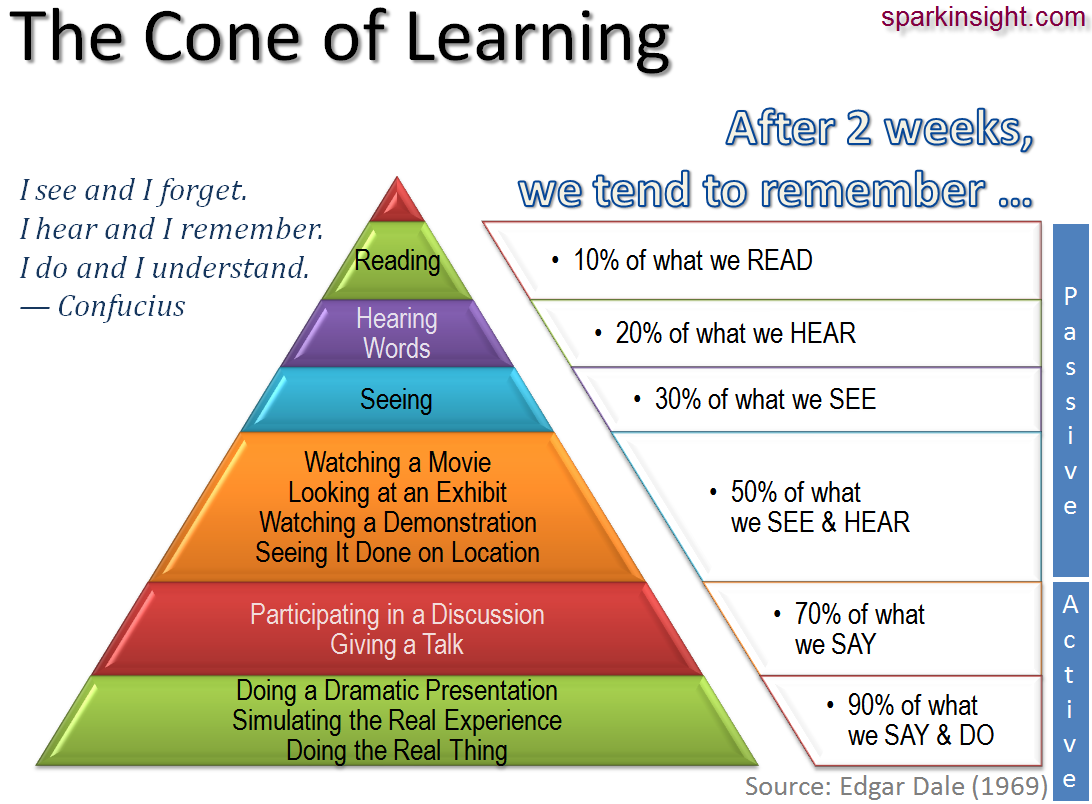
When I first saw the model above, I thought – “Well, there it is. Here is the statistical evidence that supports active engagement in schools.”
For most of us, it’s pretty obvious that when you are actively engaged in something, there is a far greater chance of retaining the learning but the date of the study caught my eye – 1969? Odd that I would find such dated research on a modern website. Certainly there has to be more current research that supports this model but looks at today’s learner. I quickly went to Google and looked up “Cone of Learning” and found it referred to in many articles and papers. But I found other articles too. And guess what – the research in this chart so widely used on the internet is BOGUS!!! It falls in the ballpark with Santa Claus, the Abominable Snowman and free paring knives with a set of Ginsu steak knives (nothing is free from K-tel – I learned the hard way). When Edgar Dale put out this research he did not attach numbers to it, in fact he told people to not take the graphic too literally. Afterall, learning is a highly complex function and this is a very simple graph. It does not take into consideration the physiological, cognitive, social or emotional aspects of learning. This is a simplistic attempt to explain a very complex function.
What do we know about learning? That it is complex!
Three things we do know:
1. The more students are engaged in the curriculum, the better the retention.
2. Expertise is developed through deep understanding and when it is personally meaningful.
3. Learning is optimized when students develop metacognitive strategies – when students “think” about their “thinking”.
So, what does this mean for your classroom? Engage kids – get them thinking about how they think and make the learning real for them.
Keep learning,
Dave

Be First to Comment